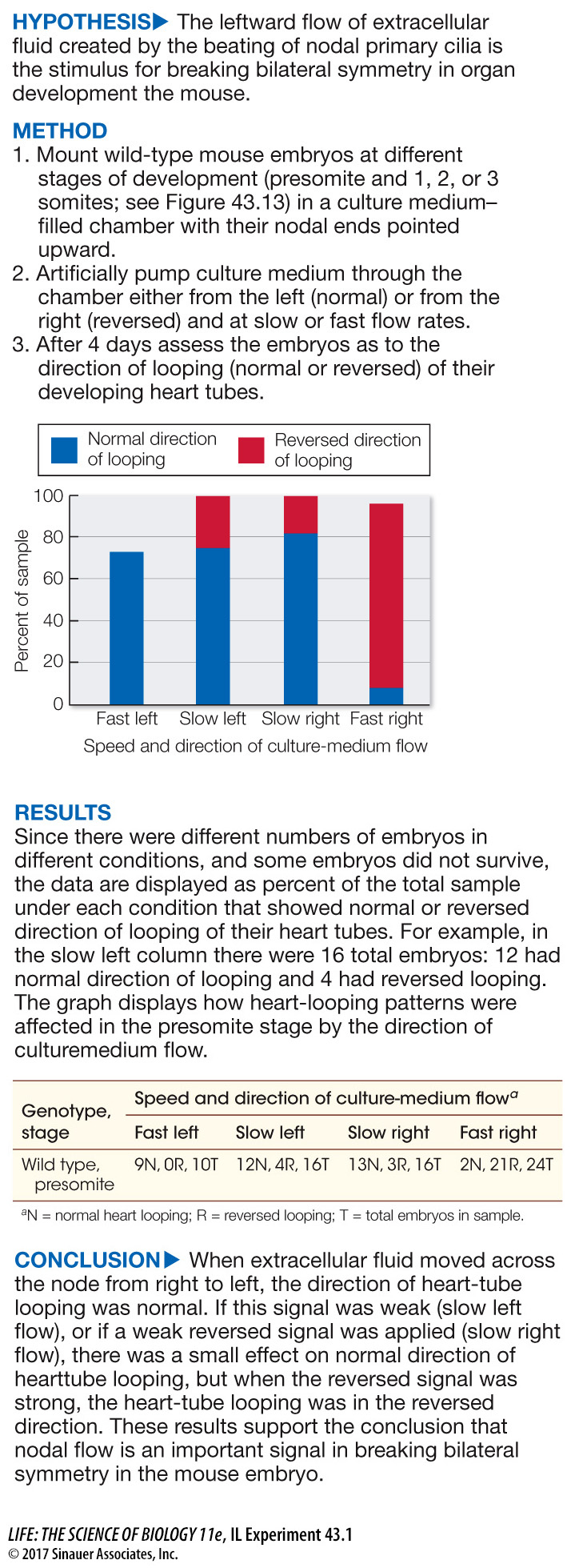How is bilateral symmetry broken?
Gastrulation results in the anterior–
929
investigating life
Does the Direction of Nodal Flow Influence the Development of Left–
experiment
Original Paper: Nonaka, S., H. Shiratori and H. Hamata. 2002. Determination of left–

work with the data
The experiment illustrated in the graph was done on presomite embryos—
| Genotype, stage | Results |
|---|---|
| Wild type, presomite | 2N, 21R, 24T |
| Wild type, 1- |
9N, 0R, 12T |
| Wild type, 2- |
22N, 0R, 22T |
| Wild type, 3- |
14N, 0R, 14T |
QUESTIONS
Question 1
Plot the data as the percent of responses on the y axis and developmental stage on the x axis.

Question 2
Why did this experiment not include left flow as a stimulus?
The experiment did not include left flow because we know left flow is the normal stimulus and that it is only disrupted by a fast right flow. This experiment was aimed at determining the sensitive period for the ability of that disruptive stimulus to alter the normal developmental pattern.
Question 3
Do these data provide evidence for a sensitive period for nodal flow determining left–
The data from embryos of different developmental stages support the conclusion that there is a sensitive phase of development where the left–right symmetry of the embryo is determined, and that it is between the presomite and 1-
Question 4
What do you conclude from the results on the 1-
The results on 1-
A similar work with the data exercise may be assigned in LaunchPad.